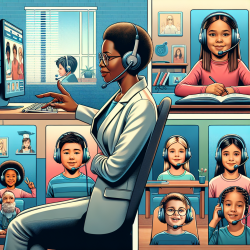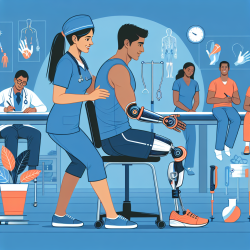As a Special Education Director, navigating the complexities of providing comprehensive, effective therapy services in schools can often feel like an insurmountable challenge. The landscape of special education is ever-evolving, with new hurdles such as therapist staffing shortages and the need for flexible, innovative solutions. One such solution that has emerged as a beacon of hope is virtual therapy. It promises not only to bridge the gap in service provision but also to enhance the quality and accessibility of therapy for students in need.
The transition to virtual therapy, especially for critical services like speech therapy in schools, can seem daunting. However, with the right approach, it can transform the educational experience for students, therapists, and educators alike. This guide aims to demystify virtual therapy and inspire you to take the next step towards integrating it into your school's special education program.
Understanding the Benefits of Virtual Therapy
Virtual therapy, or teletherapy, involves delivering therapeutic services via digital platforms. This model has gained significant traction, proving to be an effective alternative to traditional face-to-face therapy. Here are several benefits that virtual therapy offers:
- Accessibility: It breaks down geographical barriers, making it easier for students in remote or underserved areas to receive therapy.
- Flexibility: Scheduling becomes more manageable, allowing therapy sessions to be conducted outside of traditional school hours if necessary.
- Engagement: Digital platforms can offer interactive, engaging tools that enhance the therapy experience for students, keeping them motivated and invested in their progress.
- Continuity: Virtual therapy ensures that services can continue uninterrupted, regardless of external factors such as therapist shortages or global pandemics.
Addressing Common Concerns
Despite its advantages, transitioning to virtual therapy raises valid concerns among Special Education Directors. Questions about the efficacy of online versus in-person therapy, the technical requirements, and ensuring privacy and security are common. Research and case studies have shown that with the right tools, training, and protocols in place, virtual therapy can be just as effective as traditional methods. Furthermore, reputable virtual therapy providers adhere to strict privacy and security standards, ensuring that student data is protected.
Implementing Virtual Therapy in Your School
The process of integrating virtual therapy into your school's special education program requires careful planning and collaboration. Here are steps to guide you through this transition:
- Assess Your Needs: Evaluate the specific therapy needs of your students and the current challenges in meeting those needs.
- Choose the Right Provider: Select a virtual therapy provider, like TinyEYE, that offers comprehensive services tailored to schools, ensuring they meet your students' needs and comply with legal and educational standards.
- Train Your Staff: Ensure that your educators and therapists receive adequate training on the technology and methodologies used in virtual therapy.
- Engage Parents and Students: Communicate the benefits and logistics of virtual therapy to parents and students, addressing any concerns they may have.
- Monitor and Evaluate: Continuously monitor the effectiveness of virtual therapy in your school, and be open to making adjustments as needed.
Looking to the Future
The adoption of virtual therapy in schools represents a significant shift in how we approach special education. It's a testament to our collective commitment to ensuring every student has access to the support they need to thrive. As you consider integrating virtual therapy into your school, remember that this is not just about overcoming current challenges—it's about reimagining the possibilities for special education.
Feeling lost in the maze of special education needs and solutions is natural. Yet, the path forward is illuminated by the promise of virtual therapy. It's time to take the next step. Embrace the change, explore the benefits, and lead your school towards a future where every student has the opportunity to reach their full potential.










